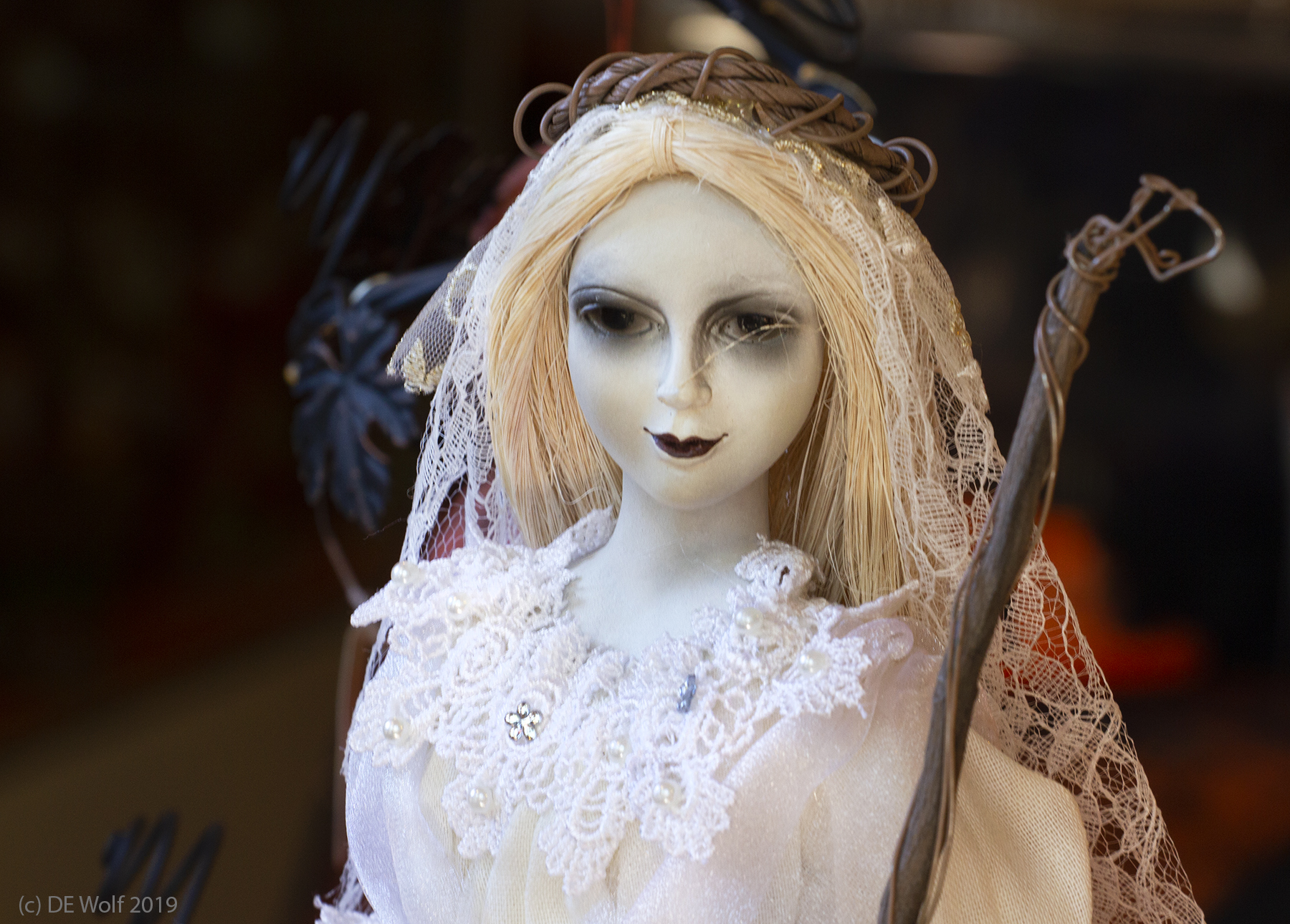On a bright September morning Skadi, the Norse goddess of Winter, is the last person or deity that you expect to run into. But this is Salem, MA after all and it is getting on towards Halloween and the Day of the Dead, which are celebrated here for the entirety of the month of October. I encountered the doll of Figure1 in a shop and fell in love with the face, gown, and light, not the least of which for me was the bokeh of the background.
The myth of Skadi is intriguing. She is a jötunn (an ice giant) and a goddess, who is associated with bowhunting, skiing, winter, and mountains. In a sense, she is the Artemis of cold weather. She is revealed to us in the Poetic Edda, compiled in the 13th century. Compiled significantly from earlier from earlier sources such as the Prose Edda and in Heimskringla, also written in the 13th century by Snorri Sturluson. Skaldi was initially married to the god Njörðr but they become divorced because Njörðr could not deal with the cold of Skaldi’s world. She then marries the god Odin and bears many children with him. Importantly, it is Skaldi who places a poisonous serpent to drip venom continuously on Loki. In marital devotion Loki’s wife Sigyn catches the venom in a bowl and it is only when the bowl becomes full and Sigyn must empty it that the venom drips agonizingly into Loki’s eyes. This, of course, figures prominently in the Norse end of the world myth, the Gotterdammerung or fall of the Gods and the coming of the Ragnarok.
Less romantically Skadi is the origin of the the Snow Queen in the Disney movie, Frozen.
Canon T2i with EF 70-200mm f/4.0 L USM Lens at 104 mm, ISO 400, Aperture Priority AE Mode, 1/15th sec at f/8.0.

